Brought to Rome by Sephardic Jews from southern Italy, the lesser-known cassola, which predate the now-ubiquitous potato latke, are enjoying a resurgence
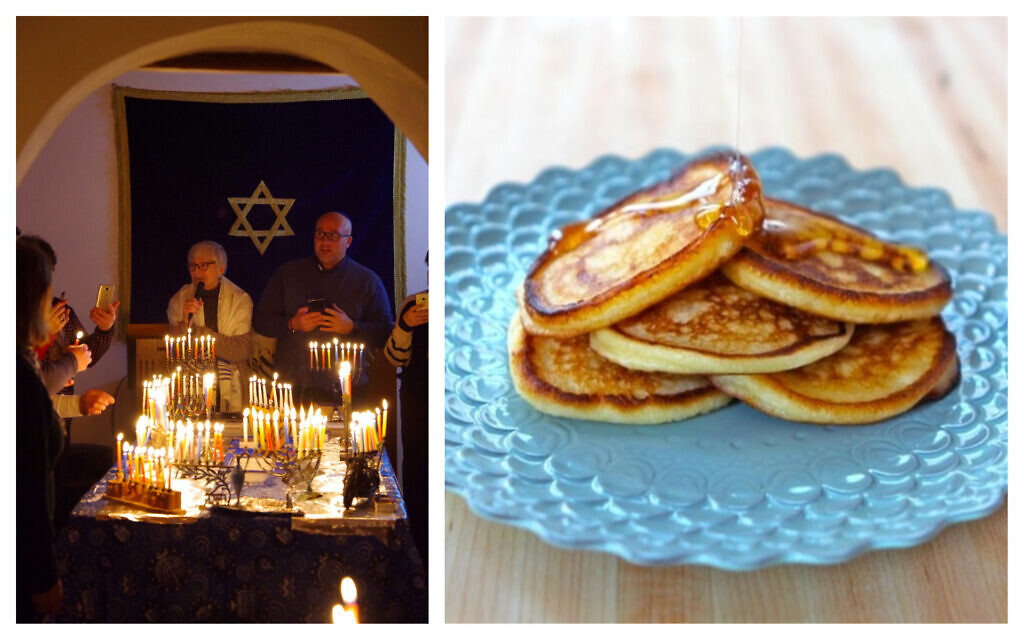
This Hanukkah, perhaps you might want to hold off on the potatoes, the applesauce, and the sour cream, and instead think about ricotta cheese — specifically, ricotta cheese pancakes from southern Italy, which might be the original Hanukkah latke, or traditional fried potato pancake.
According to some food experts, the Hanukkah latke dates back to 13th-century southern Italy. It was a ricotta cheese pancake — sans potato — and unlike its Ashkenazi counterpart, the Sephardic creation wasn’t even called latkes.
These cheese pancakes were called cassola when the recipe was brought to Rome after Sephardim traveled north from Spanish-controlled southern Italy in 1492 following their expulsion at the onset of the Inquisition.
Today, multiple food enthusiasts are working on restoring the centuries-old ricotta recipe for the Festival of Lights, rekindling long-forgotten Sephardic traditions.
Each year during Hanukkah, award-winning cooking and lifestyle blogger Tori Avey makes cassola for the holiday, reflecting an enduring interest in the recipe, which she first learned about from the “Encyclopedia of Jewish Food,” by her late friend Gil Marks.
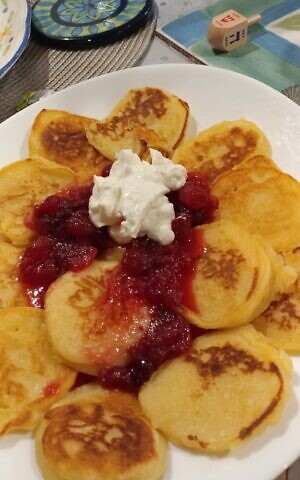
In a newly updated blog post she originally loaded ahead of Hanukkah in December 2010, Avey wrote, “They’re super easy to make and they’ll melt in your mouth. Imagine cheesy blintz filling made into a fluffy little pancake. So creamy and delicious!” She called them “every bit as appropriate for Hanukkah as [potato] latkes.”
Avey is a convert to Judaism who has become fascinated by the history of Jewish cuisine, which she writes about on her current website, as well as her previous site, The Shiksa in the Kitchen. She learned from Marks that ricotta pancakes were associated with Hanukkah by medieval Italian rabbi Kalonymus son of Kalonymus, who also connected them with the holiday of Purim.
In southern Italy during the Middle Ages, a tradition developed of eating dairy on Hanukkah because of the dramatic story in which the biblical prophet Judith saves Israel from the Assyrians.
According to the Book of Judith, customarily read on the Sabbath of Hanukkah, the prophet brought gifts of wine and salty cheese to the Assyrian leader Holofernes. When he fell asleep, she beheaded him and his besieging armies fled, and the Israelites were saved — which is why many attribute this to be the source of the tradition of cheese on Hanukkah.
Marks wrote that ricotta pancakes, being both dairy and fried, satisfied two of the holiday’s requirements. Indeed, Avey wrote in an email to The Times of Israel, “Frying them in butter makes them even more tasty.”
There is some dispute over the origins of these pancakes. When Avey contributed a guest post for PBS Food about the pancakes, “Discover the History of Latkes During Hanukkah,” one of the comments in response was that the pancakes are “at least ten centuries old and slavic (sic), and adopted by slavic jews, but not a jewish tradition. A slavic tradition. Great food, but origins are important.”
The pancakes’ important imported origins
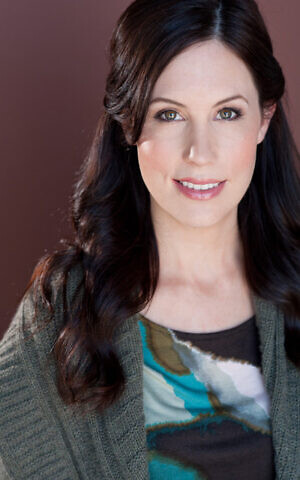
Avey identifies key developments in the history of the ricotta pancake recipe. In 1492, King Ferdinand and Queen Isabella of Spain ordered the country’s Jews to convert to Christianity or face expulsion, which also applied to Jews in the Spanish territory of southern Italy. Jews who left southern Italy brought their ricotta pancake recipe to Rome; it became cassola in the Eternal City and spread throughout northern Italy.
Several centuries later, Avey explained, events in Eastern Europe contributed to the eventual overshadowing of ricotta pancakes on Hanukkah when multiple crop failures in Poland prompted a mass planting of potatoes.
“These hearty vegetables helped to sustain the Polish population through the devastating crop failures, and they became a major source of nutrition for Ashkenazi Jews,” Avey writes. “Many recipes were adapted to utilize potatoes — including as latkes!”
“After some initial resistance, the potato pancake gained respectability and took its place in the pantheon of Jewish foods… Since potatoes were much cheaper than wheat flour or cheese, potato latkes became the most widespread eastern European Hanukkah pancake,” wrote Marks in his “Encyclopedia of Jewish Food.”
Avey noted, “The tradition followed Ashkenazi Jewish immigrants to the United States, where potato latkes firmly took hold.” She added, “Latkes also became popular in Israel, where several other types of fried treats were celebrated by Sephardic Jews, including keftes [vegetable fritters] and bunuelos, or bimuelos [a type of doughnut].”
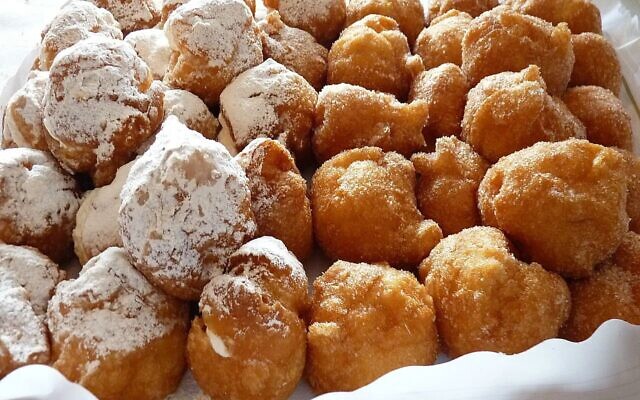
In southern Italy, ricotta pancakes might be poised for a comeback. Rabbi Barbara Aiello, the country’s lone female rabbi and a Times of Israel blogger, will make these pancakes as she welcomes guests for Hanukkah this year at her synagogue in the village of Serestretta, in the region of Calabria — “the southernmost region of Italy, the toe of the boot,” she told The Times of Israel.
While cassola is the Italian vernacular term for the pancakes, the cheese fritters are also called by the Hebrew word levivot, according to Aiello. Marks, in his encyclopedia, identified the term as both a biblical and modern Hebrew word for pancakes.
“We fry them up,” Aiello said. “They look just like latkes.” She is planning to serve them to the entire synagogue community on the seventh night of Hanukkah — which, she said, is “considered the night of women, a tradition to remember Judith, or Yehudit, give gifts of jewelry to women in the family, a little bit different from Ashkenazi traditions for Hanukkah.”
“Of course,” she said, “the whole point of eating a latke or sufganiyot or jelly donut is to remember the miracle of the oil. Latkes in Italy have the very same motive behind them.”
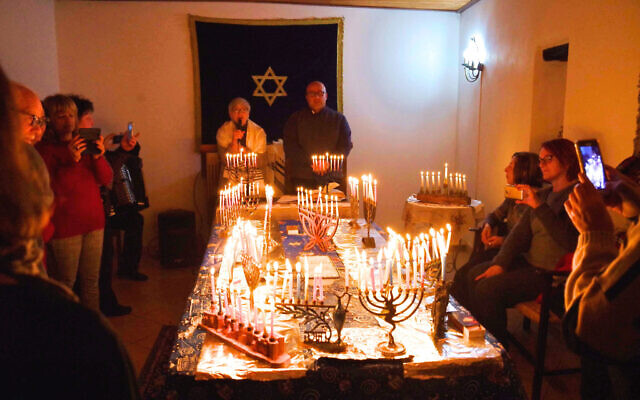
Aiello cites other parallels with Ashkenazi latkes. “Sometimes people will put a little honey, which is almost similar to the way people put applesauce or sour cream on Ashkenazi latkes,” she said. “Sometimes you can serve them as dessert with a little bit of honey.”
Yet differences remain, even beyond the ricotta. Not only are there no potatoes in the recipe, there are no onions, Aiello said. It seems there are also variations within ricotta pancake recipes. Aiello said that “400-500 years ago, we started adding greens and spinach.” And, she said, “what’s used, interestingly enough, in southern Italy is matzo meal, not flour. Who knows why? It’s not Passover. Why do we use a Passover flour at Hanukkah time?”
Avey’s recipe on her blog includes flour but not spinach; Avey also made a few suggestions for modern palates, such as agave nectar for a topping, and a gluten-free option for the flour.
“Cassola, while not as popular today as potato latkes, have their own unique charm and a fascinating history,” Avey reflected. “With eight nights to celebrate, there are plenty of opportunities to incorporate this unique dish into a holiday celebration!”
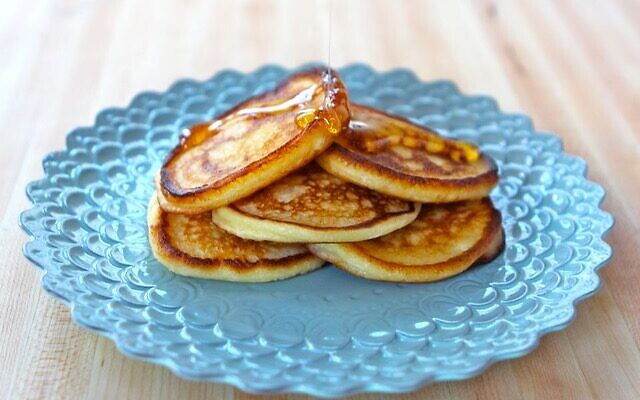
Tori Avey’s Cheese Latkes
Ingredients
1 cup high quality whole milk ricotta cheese
3/4 cup flour
3 large eggs
2 tbsp granulated white sugar
1 tsp kosher salt
1/2 tsp baking powder
Nonstick cooking oil spray, for frying
Instructions
Combine all ingredients (except the nonstick oil spray) in a food processor. Process the mixture for about 45 seconds, pausing here and there to scrape the sides, until the mixture forms a thick batter.
Spray a skillet with nonstick cooking oil and put heat to medium. Use a spoon to scoop up the batter, then pour it onto the hot skillet in a circle the size of silver dollar pancakes, using 1-2 tablespoons of batter per pancake. Spread batter into a thin circle after it hits the skillet.
Fry the latkes for 2-3 minutes on each side until they turn golden brown, but test one to make sure it’s cooked all the way through If the latkes are browning faster than they’re cooking, reduce skillet heat. Serve immediately.
These cheese latkes can be eaten plain or topped with a drizzle of honey. Other toppings include jam or preserves, sour cream, maple syrup, yogurt or agave nectar.
As reported by The Times of Israel
